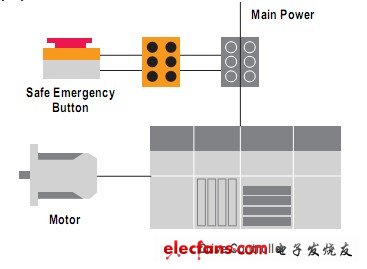
资料下载

×
采用TÜV认证的FPGA开发功能安全系统
消耗积分:0 |
格式:rar |
大小:189KB |
2012-11-08
This white paper discusses how market trends, the need for increased productivity, and new legislation have
accelerated the use of safety systems in industrial machinery. This TÜV-qualified FPGA design methodology is
changing the paradigms of safety designs and will greatly reduce development effort, system complexity, and time to
market. This allows FPGA users to design their own customized safety controllers and provides a significant
competitive advantage over traditional microcontroller or ASIC-based designs.
Introduction
The basic motivation of deploying functional safety systems is to ensure safe operation as well as safe behavior in
cases of failure. Examples of functional safety systems include train brakes, proximity sensors for hazardous areas
around machines such as fast-moving robots, and distributed control systems in process automation equipment such
as those used in petrochemical plants.
The International Electrotechnical Commission’s standard, IEC 61508: “Functional safety of
electrical/electronic/programmable electronic safety-related systems,” is understood as the standard for designing
safety systems for electrical, electronic, and programmable electronic (E/E/PE) equipment. This standard was
developed in the mid-1980s and has been revised several times to cover the technical advances in various industries.
In addition, derivative standards have been developed for specific markets and applications that prescribe the
particular requirements on functional safety systems in these industry applications. Example applications include
process automation (IEC 61511), machine automation (IEC 62061), transportation (railway EN 50128), medical (IEC
62304), automotive (ISO 26262), power generation, distribution, and transportation.

图Figure 1. Local Safety System
accelerated the use of safety systems in industrial machinery. This TÜV-qualified FPGA design methodology is
changing the paradigms of safety designs and will greatly reduce development effort, system complexity, and time to
market. This allows FPGA users to design their own customized safety controllers and provides a significant
competitive advantage over traditional microcontroller or ASIC-based designs.
Introduction
The basic motivation of deploying functional safety systems is to ensure safe operation as well as safe behavior in
cases of failure. Examples of functional safety systems include train brakes, proximity sensors for hazardous areas
around machines such as fast-moving robots, and distributed control systems in process automation equipment such
as those used in petrochemical plants.
The International Electrotechnical Commission’s standard, IEC 61508: “Functional safety of
electrical/electronic/programmable electronic safety-related systems,” is understood as the standard for designing
safety systems for electrical, electronic, and programmable electronic (E/E/PE) equipment. This standard was
developed in the mid-1980s and has been revised several times to cover the technical advances in various industries.
In addition, derivative standards have been developed for specific markets and applications that prescribe the
particular requirements on functional safety systems in these industry applications. Example applications include
process automation (IEC 61511), machine automation (IEC 62061), transportation (railway EN 50128), medical (IEC
62304), automotive (ISO 26262), power generation, distribution, and transportation.

图Figure 1. Local Safety System
声明:本文内容及配图由入驻作者撰写或者入驻合作网站授权转载。文章观点仅代表作者本人,不代表电子发烧友网立场。文章及其配图仅供工程师学习之用,如有内容侵权或者其他违规问题,请联系本站处理。 举报投诉
评论(1)
发评论
-
 易求9
2019-03-21
0 回复 举报非常感谢分享资料。谢谢。 收起回复
易求9
2019-03-21
0 回复 举报非常感谢分享资料。谢谢。 收起回复
- 相关下载
- 相关文章





